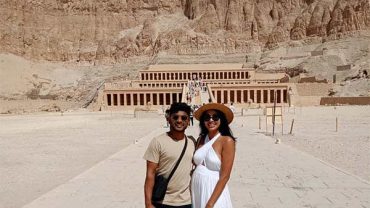The city of Alexandria, with its rich tapestry of history and culture, stands as a testament to the confluence of civilizations through the ages. One of the crown jewels in its historical crown is the Roman Amphitheatre, a majestic structure that whispers tales of a bygone era.
Nestled in the heart of this bustling metropolis, the amphitheatre stands as a silent sentinel, preserving the echoes of ancient glories. In this article, we embark on a journey of rediscovery, exploring the nuances of the Roman Amphitheatre in Alexandria and uncovering the layers of history that make it an unparalleled gem in the cultural mosaic of the city.
A Glimpse into the Past
The Roman Amphitheatre in Alexandria, often referred to as the Kom El Dikka theatre, is a marvel of ancient architecture that dates back to the second century AD. Built during the Roman period, this grand amphitheatre was once a hub of entertainment and cultural gatherings.
Its elliptical shape, indicative of Roman amphitheatres, provided a seating capacity for thousands, showcasing the grandeur of the events hosted within its walls. Gladiatorial contests, theatrical performances, and public assemblies were among the many spectacles that brought the city’s residents together in a celebration of life and community.
Preservation Efforts and Archaeological Revelations
While the passage of time and various historical upheavals have taken their toll on this architectural marvel, the Roman Amphitheatre in Alexandria has not been forgotten. In recent years, concerted efforts have been made to preserve and restore this ancient gem. Archaeological excavations have unearthed hidden treasures, revealing intricate details of the amphitheatre’s design and shedding light on the daily lives of the people who once filled its seats.
The restoration project, driven by a shared sense of cultural responsibility, has not only resurrected the physical structure but has also rekindled a collective pride in Alexandria’s rich heritage. The amphitheatre, once buried beneath the weight of centuries, now stands tall as a living testament to the resilience of history and the enduring spirit of a city that refuses to let its past fade away.
Cultural Revival and Community Engagement
The resurgence of interest in the Roman Amphitheatre has sparked a cultural revival in Alexandria. The site has become a focal point for community engagement, hosting a myriad of events ranging from historical reenactments to contemporary performances. This newfound vibrancy not only breathes life into the ancient stones but also fosters a connection between the present and the past, allowing residents and visitors alike to forge a deeper understanding of the city’s roots.
Local businesses, recognizing the tourism potential of this historical site, have flourished, providing an economic boost to the surrounding area. Cafés, art galleries, and artisanal shops have sprung up, creating a vibrant atmosphere that complements the ancient backdrop. The Roman Amphitheatre, once a silent relic, has become a dynamic space where history and modernity coexist harmoniously.
Revitalizing the Amphitheatre Experience
The reawakening of the Roman Amphitheatre has not been limited to preservation efforts and community engagement alone. Modern technology has played a pivotal role in enhancing the visitor experience, making the historical site more accessible and engaging for a diverse audience.
Virtual tours and augmented reality applications now allow individuals from around the world to explore the amphitheatre’s grandeur from the comfort of their homes. This technological integration not only serves as an educational tool but also acts as a bridge between generations, ensuring that the tales of the Roman Amphitheatre are passed down to future audiences.
Educational Initiatives and Cultural Exchange
The resurgence of interest in the Roman Amphitheatre has spurred educational initiatives aimed at bringing history to life for younger generations. Local schools and universities have incorporated the site into their curriculum, organizing field trips and interactive programs that allow students to connect with the past. This educational focus not only instills a sense of pride in Alexandria’s cultural heritage but also fosters a love for history and archaeology among the youth.
Furthermore, the Roman Amphitheatre has become a symbol of cultural exchange. International collaborations and partnerships have emerged, facilitating the exchange of knowledge, expertise, and resources for the continued preservation and exploration of the site. Scholars and archaeologists from various corners of the globe converge in Alexandria, contributing to a global understanding of ancient civilizations and the shared human heritage that transcends borders.
Sustainable Tourism and Environmental Consciousness
As Alexandria welcomes an increasing number of visitors to its Roman Amphitheatre, there is a growing emphasis on sustainable tourism practices. Local authorities, in collaboration with environmental organizations, have implemented measures to ensure that the influx of tourists does not compromise the integrity of the site or its surroundings. Green spaces, pedestrian-friendly zones, and eco-conscious infrastructure developments contribute to the overall well-being of the amphitheatre’s ecosystem.
The infusion of sustainability into the tourism model not only preserves the environmental balance but also promotes responsible travel. Visitors are encouraged to appreciate the historical significance of the Roman Amphitheatre while being mindful of their impact on the delicate archaeological site. This approach ensures that future generations can continue to marvel at the amphitheatre’s grandeur without compromising its authenticity.




Comment (0)